The Invasion of Traverse City
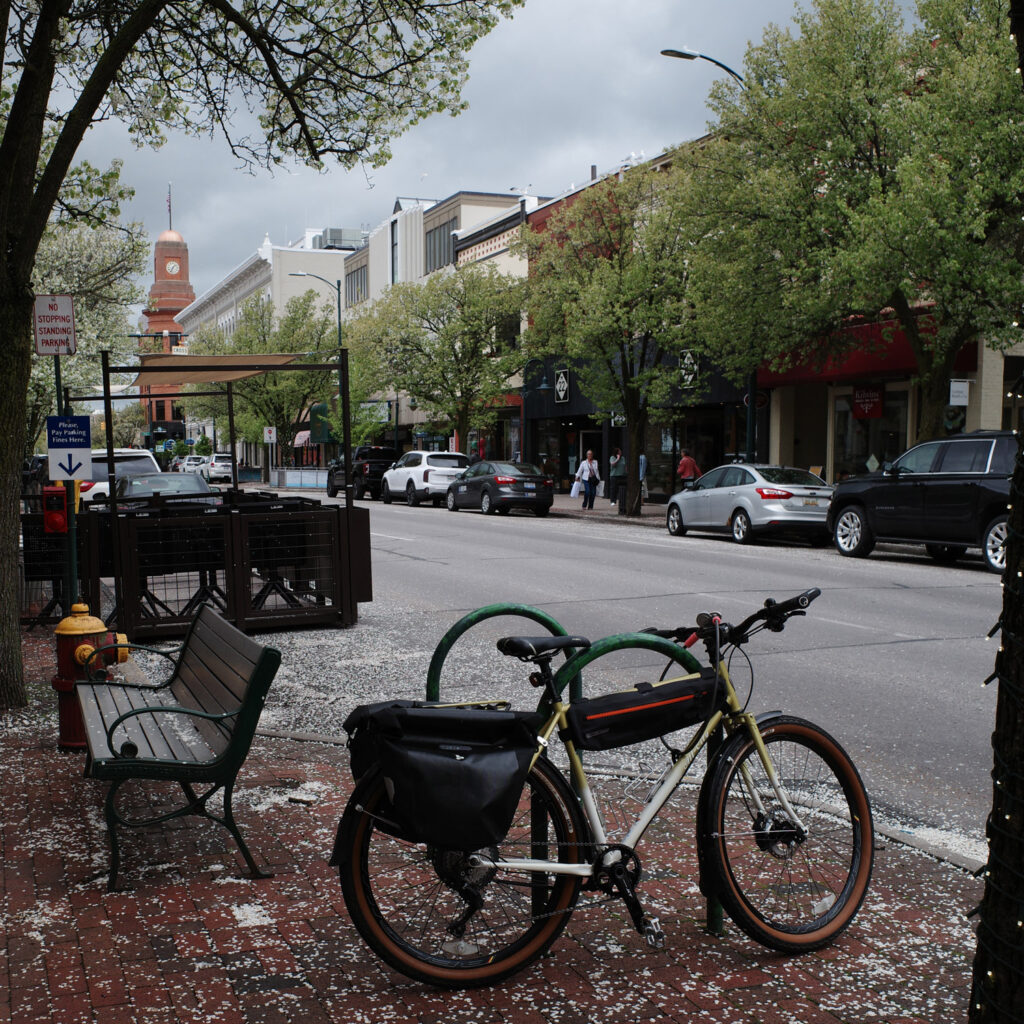
Traverse City is changing. If it wasn’t Traverse City (emphasis on city) before, it is Traverse City now. Blown up and grown up. More than 10,000 new residents in the tiny metro area over the past decade. Crowded roads. US-31 wasn’t meant to handle it. There were once a few hotels along the road, mid-century houses looking over the water, and a few little restaurants for tourists. Now, you have the same things but a lot more of them, and they’re packed in tighter than ever. It’s not only 31 either. More stores, more parking lots, more cars, more people. It’s the only place you are going to sit in traffic north of Ludington.
That’s fine, it’s a city. But it wasn’t always like this. There is construction everywhere. You can’t drive more than four minutes without seeing another concrete development or a barrage or orange barrels. Locals complain about the cost of housing and how it’s getting harder and harder to find a place to live. It’s not a peaceful getaway on the Big Lake anymore. You don’t go there to escape the hustle and bustle. It is the hustle and bustle.
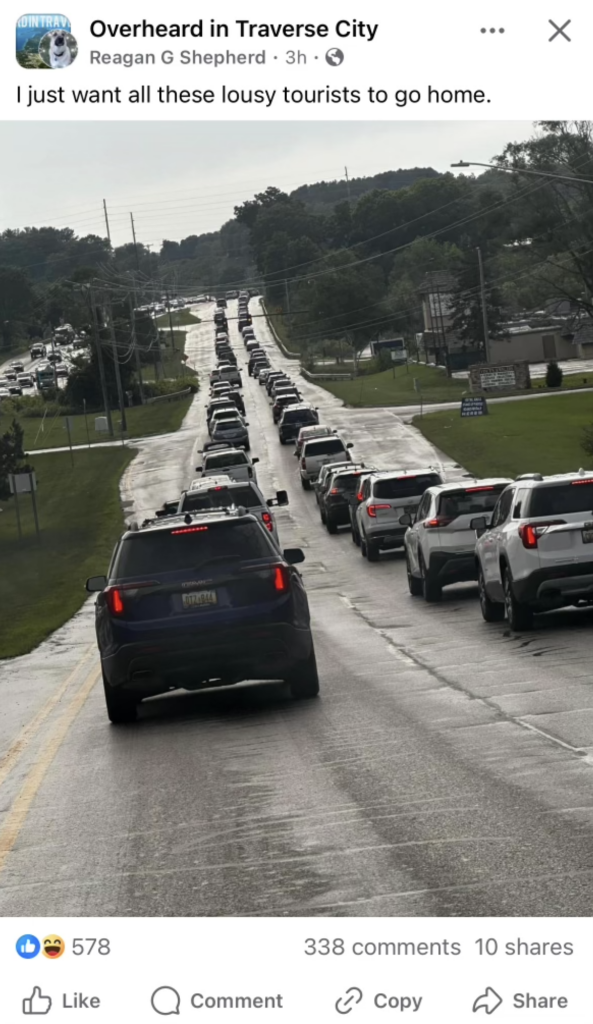
The cultural chasm between TC and the towns on the lake grows and grows. Walking in Traverse City is practically indistinguishable from walking in any other city, in any other state. The same symbols, trends, chains, and cultural “movements” that are characteristic of any city, anywhere, are now characteristic of Traverse City. Less lake, more trend. Less real, more fake.
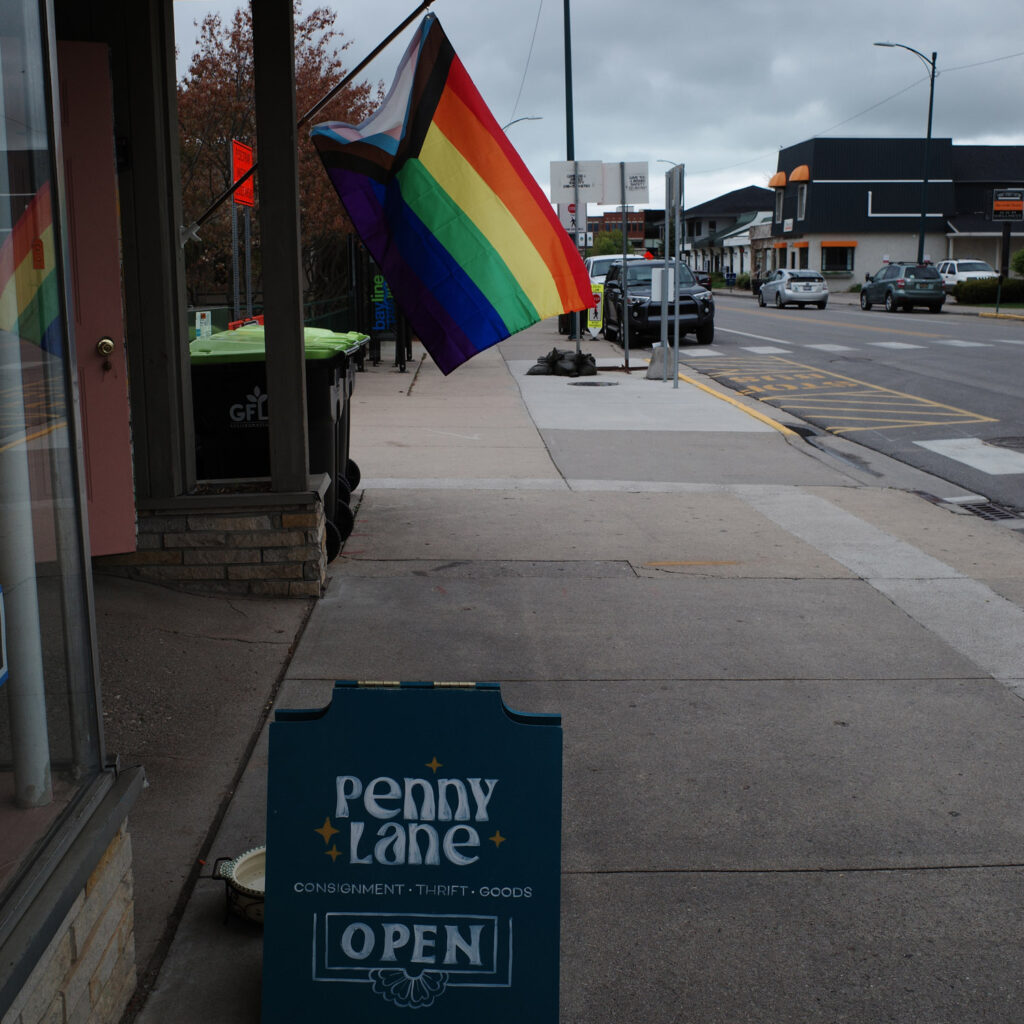
Walking on Front Street. I pass all the typical signs and flags that signal you are a good person™ in 2024. The religious symbols of global leftism are plastered on windows and doors. I walk one block and hear three different languages on the street. The next, graffiti. It’s spray painted on USPS mailboxes and the backs of street signs. On the concrete retaining wall of the immaculate beach: “FREE GAZA.” Unthinkable 25 miles north or south.
It’s not a peaceful getaway on the Big Lake anymore. You don’t go there to escape the hustle and bustle. It is the hustle and bustle.
Higher population density comes with an increasing sense of anonymity. I pass a Lululemon. Unreal. Immediate access to athleisure is not characteristic of a Northern Michigan lake town. It’s not a money thing. Harbor Springs isn’t exactly short on cash, and there is no Lululemon there. Harbor Springs is still a lake town, Up North.
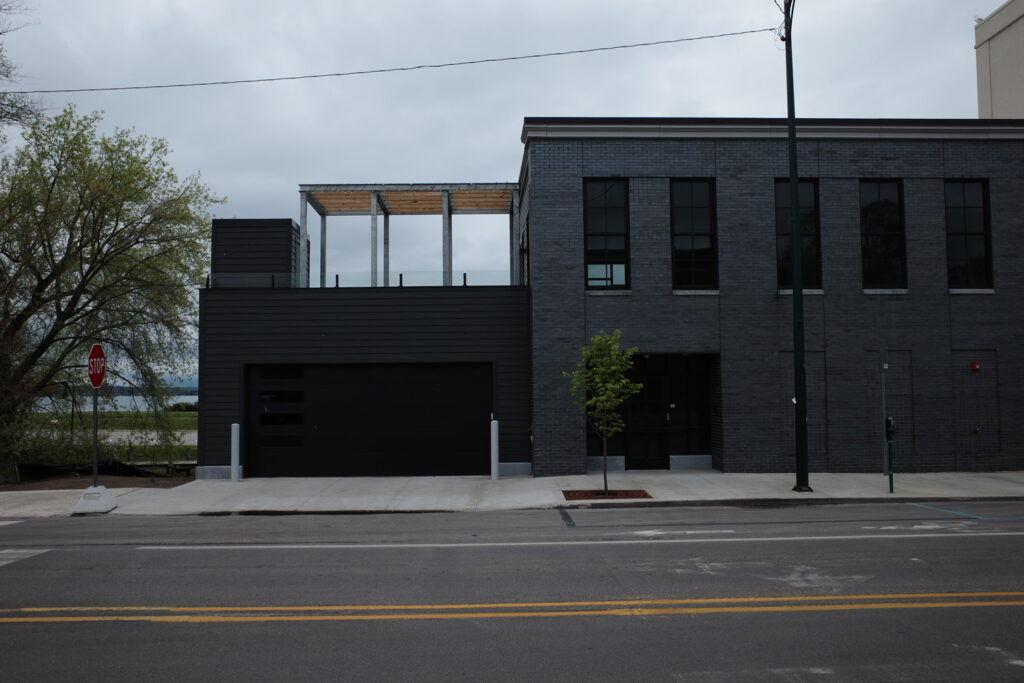
I’m standing in front of a black minimalistic fortress. Is it a house? An office? A black site? Who knows. It is culturally nothing—drab, dour, and sad. But it thinks it’s cool. There are a bunch of new buildings just like this around the city. I come across an old house. It’s warm and inviting. There are untrimmed shrubs in front of the porch. An old walkway. It’s not sleek and new. It’s not trying to be something it isn’t. It’s seen Traverse City change. People have sat on that porch, drinking beer on countless summer nights. Then there is a building made of sheet metal and concrete. It towers above in strict clean severity. The intersection of culture and anti-culture. It could be in Stockholm or New York. It’s not. It’s in Traverse City.
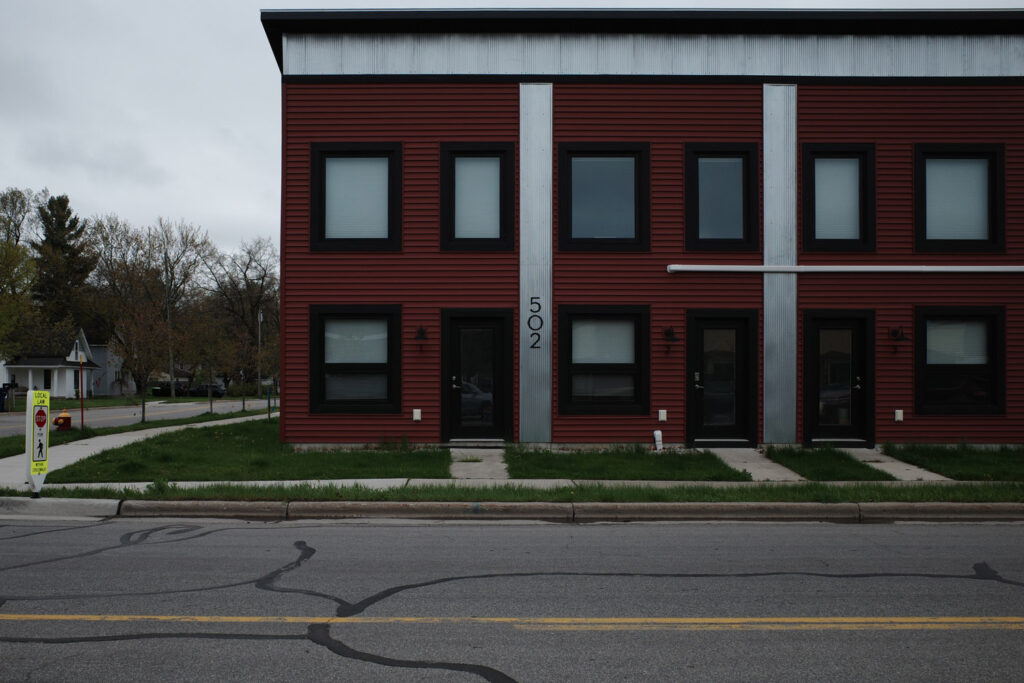
Slick new lofts with walls of windows and minimalistic interiors. You see them from the street. Shiny new restaurants with names that are supposed to feel authentic and established but are so obviously the opposite. Mama Lu’s, “A Modern Day Taco Shop.” There are menus with modern takes on street food that charge three times more than street food. EV charging stations by the beach. Clothing stores that proudly proclaim “ethical apparel.” Wellness centers offering astrology classes. A sign in front of FATFACE educates me about mental health awareness month. The old TC faces off against the new TC everywhere. Old corner stores with old names. Terrace Shopper Subs & Salads, Kap Keg PKG Liquor Store. New weed stores. House of Dank, PUFF Cannabis Company, Green Pharm Traverse City. Old Restaurants with old signs and old menus. Willie’s Rear, J & S Hamburg Restaurant. And now, Starbucks.
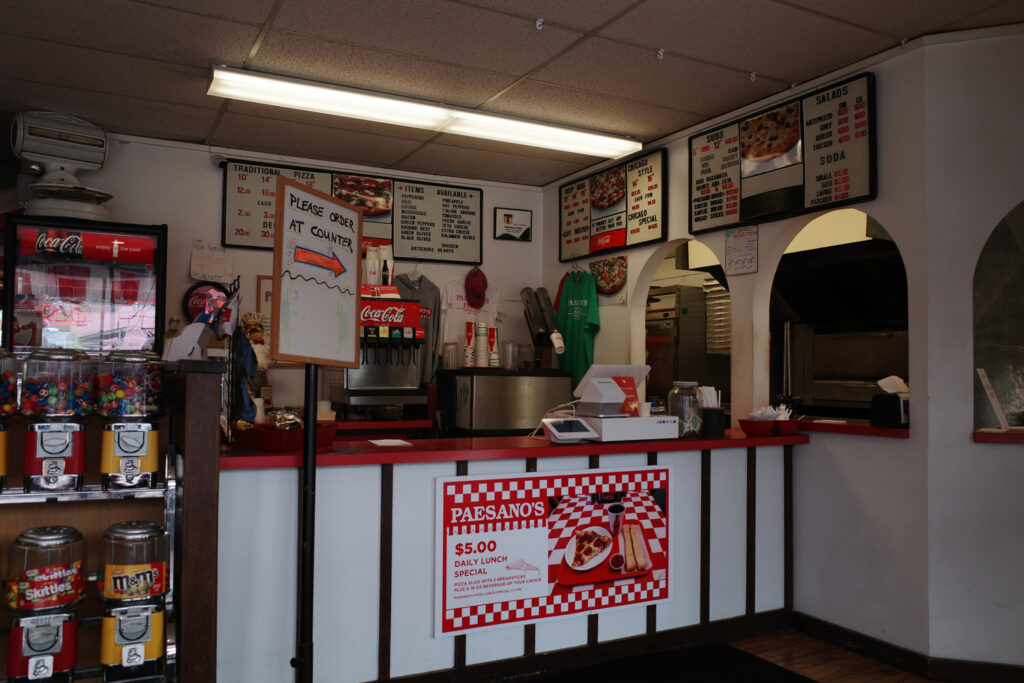
I stop and grab something to eat at Paesano’s Pizza. This was here before. I can tell as soon as I see it. It’s real. There are no kitschy ironic murals signaling “authenticity.” I don’t have to use my phone to check the menu. I walk up to the counter and order the lunch special. Five bucks for a piece of pizza, two breadsticks, and a Mellow Yellow. Great deal in 2015. Incredible deal in 2024. An old Pac Man video game along the wall. It’s been there forever. It’s not ironic. It’s not vintage. It’s old. Thousands of greasy, grubby little hands have grabbed the controllers. There are hundreds of photos pinned on the walls like wallpaper. Photos of families and couples sitting in these exact same booths. Teenagers carved their names, hearts, and dates into the wooden seats.
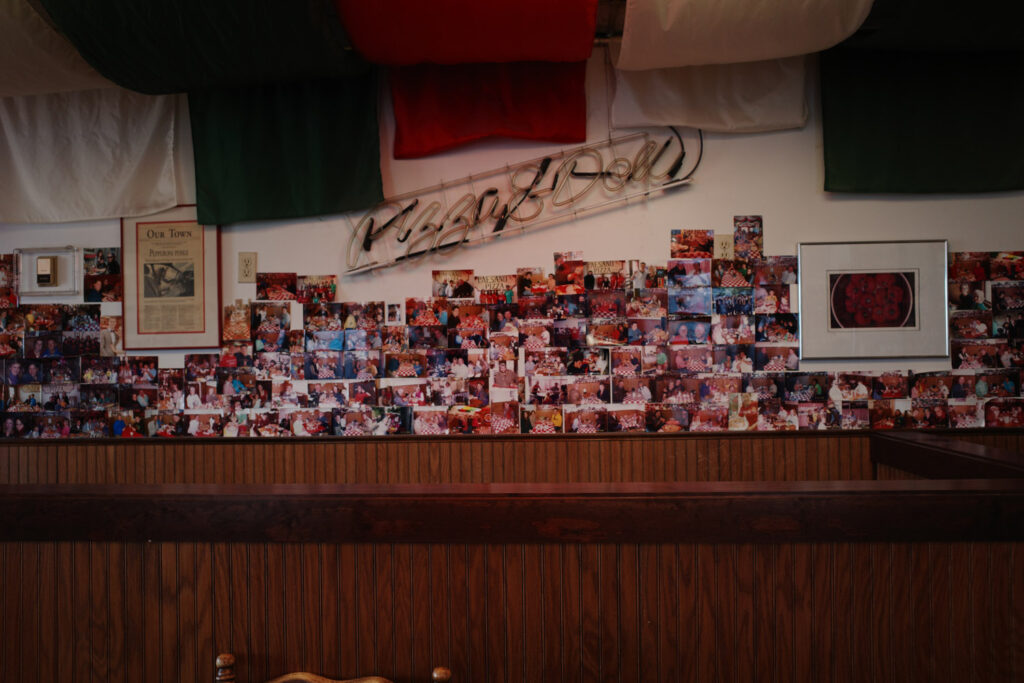
Those photos, those booths, the menu on the wall, the video games, the old school white and red waterproof tablecloths. An honest relief of authentic Michigan amid the deluge of transparent fakery. The guy behind the counter is a local. Lived in Traverse City since he was a kid. He’s seen it change. “It’s getting busier,” he says. There used to be a party store across the street. Now it’s food trucks. And why does a party store read as real and the food truck as fake? Food trucks trickle down from coastal cities where it’s cool to eat on the street year-round. That’s what they say. The party store is outdated. It’s old, but it’s not vintage. It’s not marketed. It’s not trying to capture an audience. It’s booze, beer, cigs, and snacks. Now it’s much better to post Instagrams than smoke cigarettes. But at least party stores have a sense of humor.
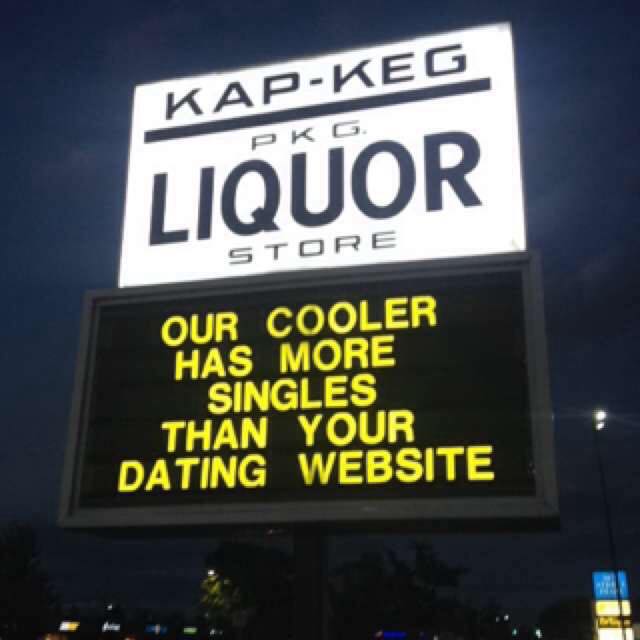
There are rumors that old Traverse City residents have decided to move north, heading to the towns that remind them of what Traverse City used to be. Petoskey, Charlevoix, Harbor; still small and quiet. No graffiti, no traffic, no coastal wannabe-ism. They aren’t part of the global monoculture. They still have that delicate balance that all lake towns have. Anyone who lives in one knows what it is. Life in a small pond. The MAGA truck next to a Subaru at the gas station. An endangered species. Get ‘em while you still can. Even our liberals are better than their liberals. The crunchy environmentalist who moved up north in the ‘70s isn’t the same as the WFH email job-haver who wants to manifest Chicago in Traverse City.
There is still a rootedness in the towns of refuge. The rootedness that Traverse City used to have. Towns that are small enough that the trendy flakes don’t want anything to do with them. They’re too quiet to seduce the vapid. Once a place grows enough, it starts to spin out of control. And it only goes one way. Transplants and posers gradually move in and slowly make the place into a lesser version of itself. They make it what they want, but not what they need. It becomes like every other place. Beauty is in the differences, but the cultural steamroller rolls on nonetheless. At first, it appears trendy. It appears “cool.” But it’s fake. And in the end, the global monoculture flattens every place it conquers.
O.W. Root is a writer based in Northern Michigan, with a focus on nature, food, style, and culture. Follow him on X at @NecktieSalvage.